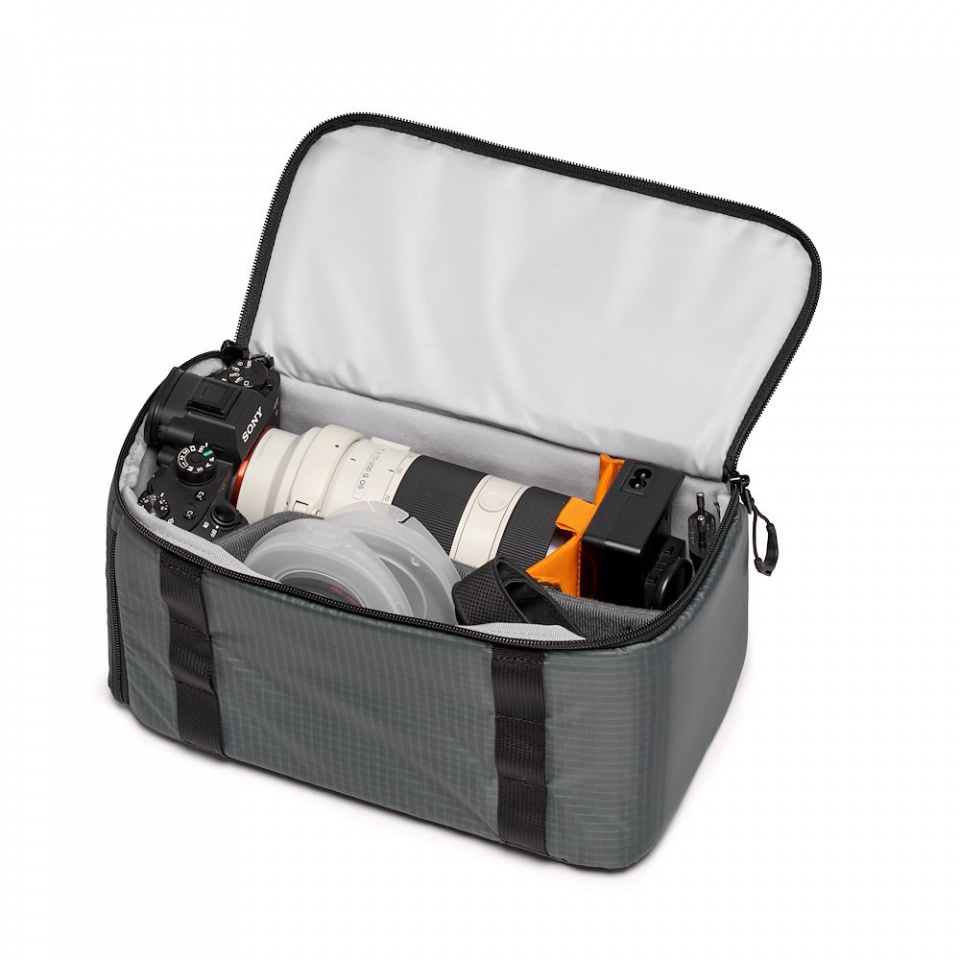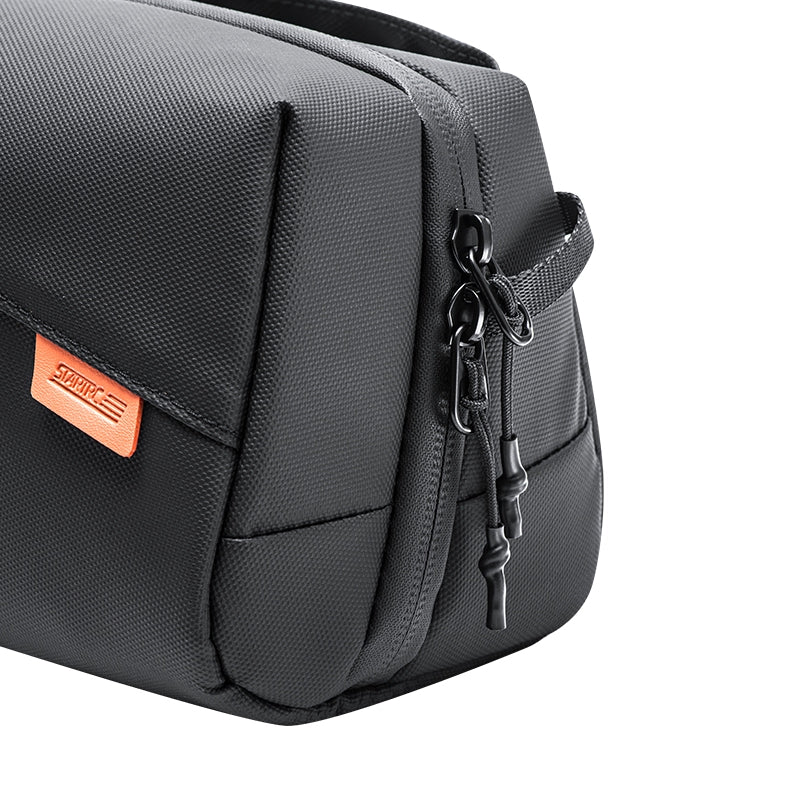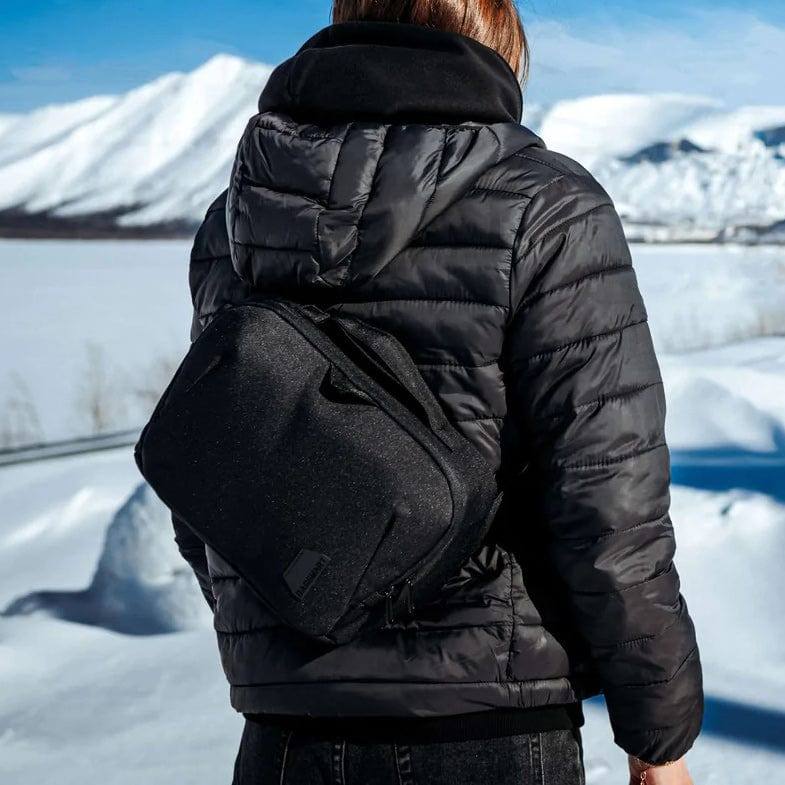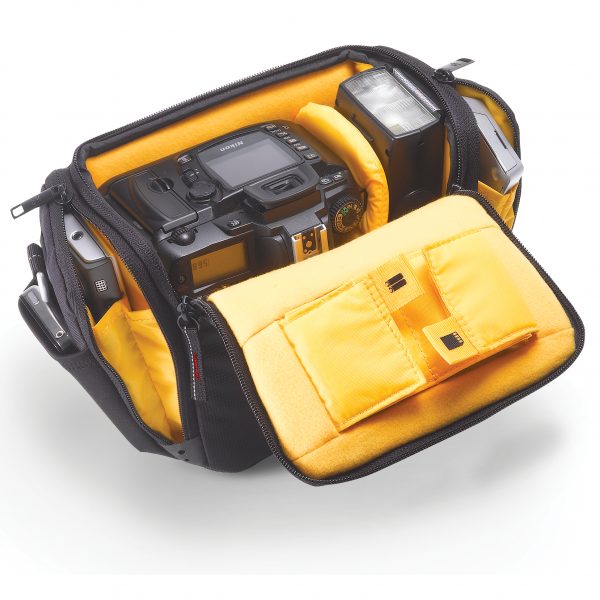The Importance of Selecting the Right Camera Bag
Selecting the right camera bag is crucial for any photographer, especially when traveling. Your choice determines not only how comfortably you can move around but also the safety and accessibility of your equipment. An ideal travel camera bag must protect gear from bumps and weather, provide easy access for quick shots, and comply with travel regulations for carry-ons.
Quality, capacity, and functionality should guide your selection. A bag that’s too small may not fit all your gear, while a large, cumbersome bag can hinder your movement and cause strain. Look for durable materials built to withstand frequent use, variable weather, and the rough handling that often comes with travel. Padded compartments, strong zippers, and water-resistant fabrics are essential features that ensure the longevity of both your bag and camera equipment.
Moreover, a camera bag for travel should offer quick access to your gear. Delays in removing a camera can mean a missed shot of a fleeting moment. Therefore, ease of use is a significant factor – bags with multiple access points, such as side pockets for retrieving cameras or lenses, are highly beneficial.
Lastly, considering airline luggage restrictions, a bag that’s too bulky may not be practical. Selecting one that maximizes internal space without exceeding carry-on dimensions avoids check-in hassles and keeps your gear close during flights.
Your camera bag is a silent companion on your photography adventures, so pick one that matches your needs and style; it can make all the difference in capturing those once-in-a-lifetime shots.

Different Types of Camera Bags for Travelers
When you’re trotting the globe to snap that perfect shot, the type of camera bag you choose can impact your comfort, equipment accessibility, and overall travel experience. There are various types of camera bags, each with its own set of advantages and limitations. Understanding these can help you decide which style suits your travel and photography needs the best.
Pros and Cons of Camera Backpacks
Camera backpacks are popular among travel photographers for their comfort and capacity. They typically feature padded straps, which distribute weight evenly across your shoulders, reducing fatigue during long treks. Backpacks often have multiple compartments for organizing gear, and they usually fit airline carry-on standards. However, they can be cumbersome in tight spaces, and accessing equipment quickly can be a challenge.
Characteristics of Shoulder Camera Bags
Shoulder camera bags are favored for their easy access to gear; you can swing the bag around and unzip it to grab your camera or lens. They’re smaller and more low-profile than backpacks, making them less burdensome in crowded areas. That said, they can strain your shoulder, especially when loaded with heavy gear, and they may offer less protection against bumps compared to backpacks.
The Versatility of Camera Sling Bags
Camera sling bags combine the easy access of shoulder bags with the comfort of backpacks. Worn diagonally across the body, slings allow you to quickly rotate the bag to the front for fast gear retrieval. They’re ideal for light to moderate loads and offer decent equipment protection. The downside is they have less space than a backpack and may become uncomfortable with heavy loads.
Camera Cases and Holsters for Minimalist Photographers
For the minimalist photographer who prefers to travel light, cases and holsters are the go-to. They provide snug protection for a camera and possibly one additional lens. These are perfect for quick, short trips where you only need the essentials. The trade-off with these types is limited space, meaning you can’t carry extra lenses or accessories.

Key Features to Look for in a Travel Camera Bag
When selecting a travel camera bag, certain features are crucial for both the protection of your equipment and ease of use. Identifying the right features will help safeguard your gear, provide comfort, and ensure convenience throughout your photography journey. Let’s explore the essential characteristics to consider.
Durability and Material
A sturdy camera bag can withstand travel’s wear and tear. Look for high-quality, resilient materials like ballistic nylon or leather. These fabrics resist tearing and endure rough handling well. Also, consider reinforced stitching and heavy-duty zippers to prevent breakage and extend your bag’s life.
Size and Capacity Considerations
Your camera bag must fit your equipment snugly without being oversized. Ensure it’s big enough to hold your camera, lenses, and accessories but small enough to meet carry-on rules. A bag with adjustable compartments offers flexibility for different gear setups.
Accessibility and Ease of Use
Fast access to your camera and lenses is key. Choose bags with multiple openings and quick-release buckles. Bags with pockets and sections for small items like batteries and memory cards are advantageous. Comfortable grips and straps also add ease of use.
Protection Against the Elements
Your bag should shield your gear from rain, dust, and bumps. Look for waterproof or water-resistant features, and consider bags with padded interiors. Some bags come with built-in rain covers, offering extra protection in bad weather.
Top Picks for Camera Bags for Travel Photography
Finding the right camera bag for travel photography is vital. It should fit your gear, be easy to carry, and protect against the elements. Here are some top picks across various styles, each suited for different needs and preferences.
Best Backpack Picks for Extensive Gear
Camera backpacks offer great space and comfort for carrying lots of gear. Many provide padded compartments, sturdy materials, and weather protection. Look for options with adjustable dividers and multiple access points to keep equipment organized and accessible. Some top choices include the Wandrd Prvke and Brevite The Jumper, favored for their durable build and ergonomic design.
Top Shoulder Bags for Convenience
Shoulder bags stand out for ease of reach. They’re great if you want quick access to your camera and avoid the hassle of removing a backpack. It’s crucial to find a bag with a comfortable strap to distribute weight evenly. The Billingham Hadley Pro and Manfrotto Advanced Messenger M III offer a blend of accessibility and style.
Sling Bags for Quick Access to Your Gear
Sling bags combine the best parts of backpacks and shoulder bags. They are perfect for fast-paced shooting where quick gear retrieval is essential. Models like the Moment Rugged Camera Sling and Wandrd Rogue Sling are top picks due to their ease of rotation and snug fit against the body.
Compact Cases for Light Travels
For occasions when you only need a camera and one lens, a compact case or holster is perfect. They’re light, easy to carry, and offer quick access. Go for something like the Manfrotto Advanced III Holster Bag or the Lo & Sons Claremont Crossbody, which provide minimalism without sacrificing protection.

Tips for Organizing Your Camera Gear within Your Bag
Keeping your camera gear organized in your bag is essential for quick access and protection. Here are some practical tips for arranging your equipment efficiently:
- Use Padded Dividers: Most camera bags have adjustable padded dividers. Use them to create snug sections for each piece of equipment, ensuring they don’t collide.
- Designate Zones: Dedicate specific areas within your bag for different types of gear. Keep cameras, lenses, and accessories in separate sections to avoid confusion.
- Implement Accessory Pouches: Utilize small pouches or pockets for cables, batteries, and memory cards. This prevents them from getting lost among larger items.
- Label Everything: Consider labeling sections and pouches, so you know exactly where everything is. It saves time when searching for items in a hurry.
- Keep Most-Used Items Handy: Place items you use the most in easily accessible pockets or at the top of your bag. This could include a favorite lens or your camera body.
- Regularly Clean and Adjust: After trips, clean your bag and reevaluate the organization. Gear needs might change depending on your project or destination.
- Balance Weight Evenly: Distribute the weight across the bag evenly to make carrying it less tiring. Heavy lenses should be at the center of the backpack for better balance.
- Utilize External Straps: For items like tripods or water bottles, make use of external straps or pockets to free up space inside the bag.
Implementing these organizational strategies can greatly enhance your photography experience by ensuring that you’re prepared and protected, no matter where your travels take you.
Final Thoughts: Balancing Comfort, Style, and Functionality
Choosing the right camera bag is a balance of comfort, style, and functionality. It must feel good to carry, suit your style, and serve your needs well. A comfy bag with easy gear access can make your travels more enjoyable. A stylish one will please your eye and match your taste. Yet, a functional bag ensures gear safety and meets travel needs. Look for a bag that ticks all three boxes to enhance your photography trips.
Comfort comes from padded straps, a good fit, and even weight distribution. Style is personal. Some may prefer a sleek, modern look while others go for a classic or rugged appearance. Function is key for protection and ease of access. Look for quick-open pockets, durable materials, and smart layouts. The best camera bag is one that you can carry happily, reflects who you are, and supports your photography goals.
Remember, the right camera bag is an investment. It holds your treasured gear and joins you on countless adventures. Take the time to pick one that you’ll be content with across various travels and shoots. A bag that balances comfort, style, and functionality will not only protect your equipment but also make your photography journey smoother and more enjoyable.
